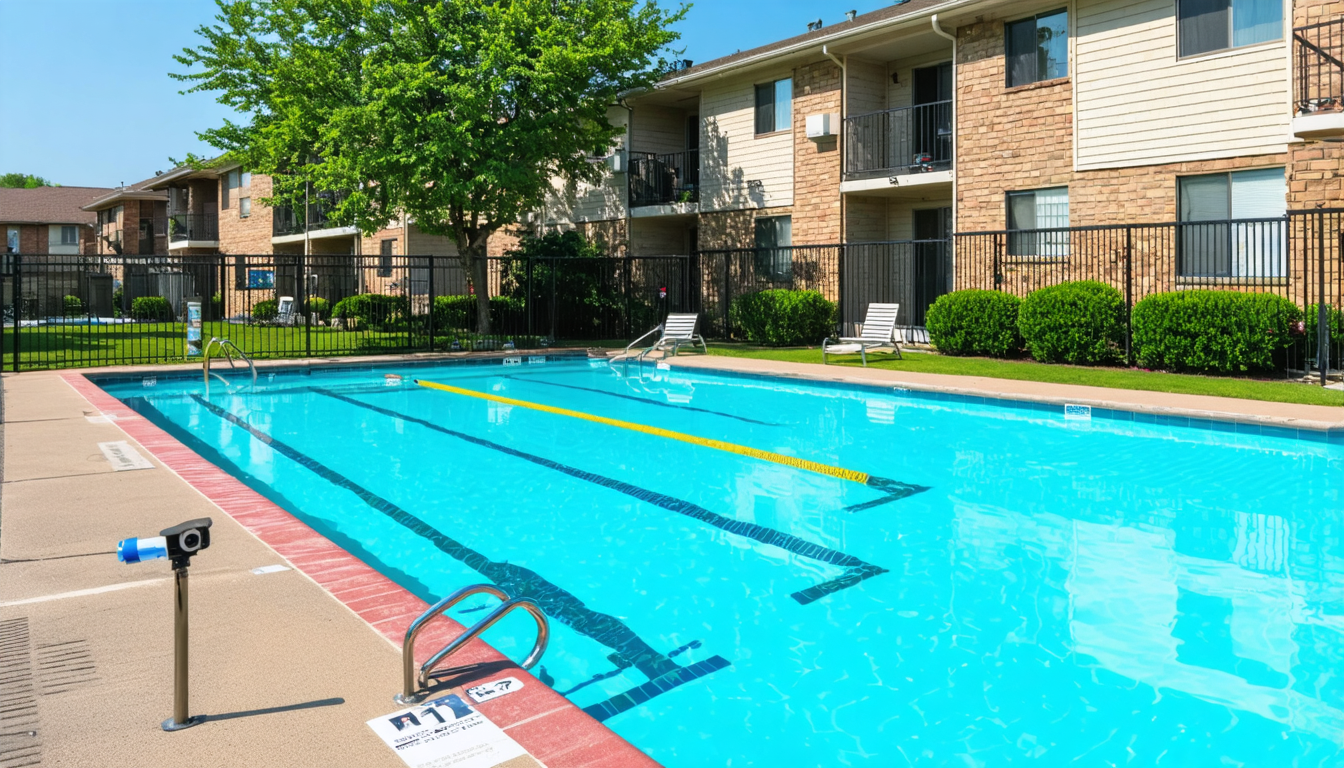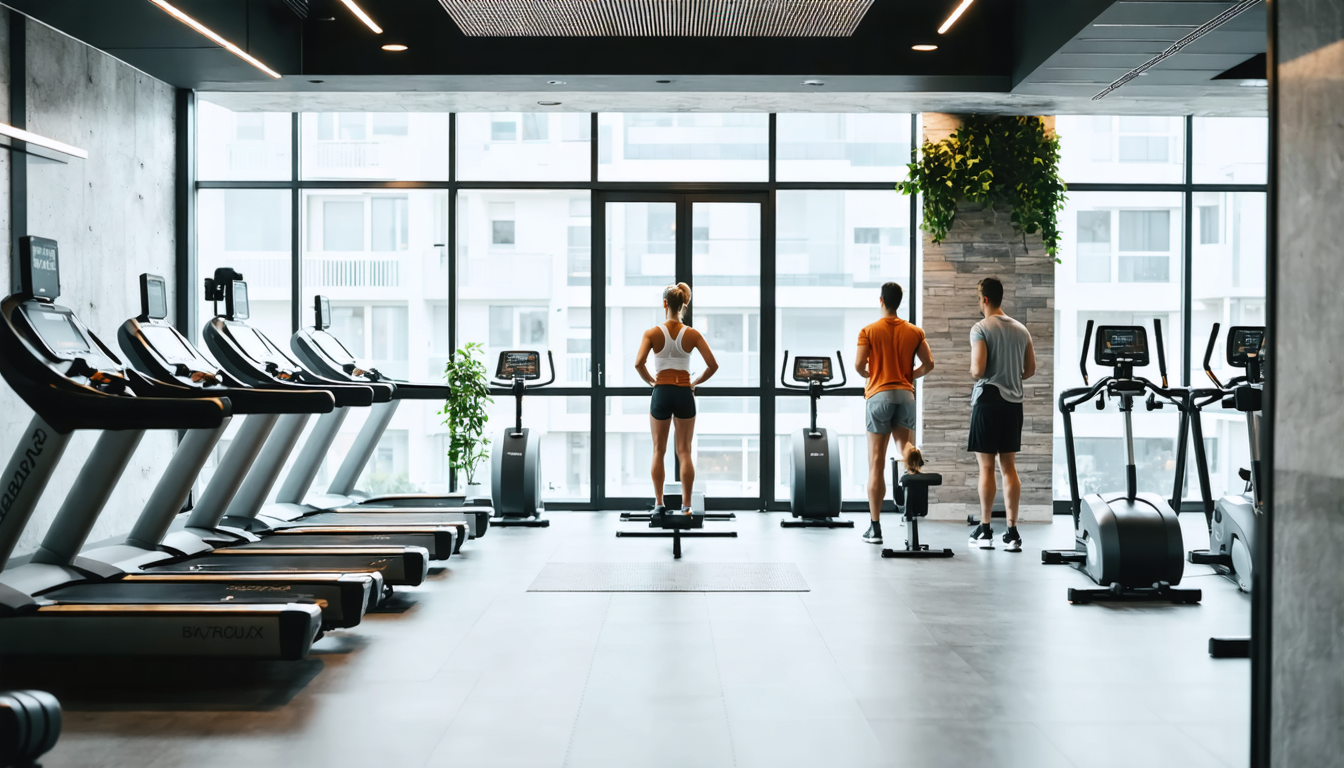- Common Areas and Their Unique Coverage Needs
- Liability Concerns for Pools, Gyms, and Recreational Spaces
- Risk Assessment for Shared Facilities
- Property Manager vs. Owner Responsibilities
- Coverage Options for Communal Equipment and Fixtures
- Tenant Education on Shared Space Liability
- Maintenance Documentation and Insurance Claims
- Special Considerations for Luxury Amenities
- Cost-Effective Insurance Strategies for Multiple Amenities
- Balancing Coverage Needs with Budget Constraints
- Conclusion
1. Common Areas and Their Unique Coverage Needs
Shared spaces in apartment complexes present distinct insurance requirements compared to individual units. Lobbies, hallways, elevators, and community rooms experience high traffic volumes and varied usage patterns, increasing potential liability exposure.
Standard commercial property insurance typically covers structural damage to common areas, but specialized coverage may be necessary for particular features. For instance, an ornate lobby fountain might require additional coverage beyond standard policies. Outdoor spaces like courtyards and gardens also need specific considerations, especially regarding weather-related damages.
Insurance policies should explicitly define which common areas are covered and to what extent. This clarity prevents coverage gaps that could leave property owners financially vulnerable following an incident. Working with insurance providers who specialize in multi-unit residential properties ensures these unique needs are properly addressed.

2. Liability Concerns for Pools, Gyms, and Recreational Spaces
Recreational amenities significantly increase liability exposure. Swimming pools present drowning risks and potential slip-and-fall accidents, while fitness centers contain equipment that could cause injury if improperly used or maintained.
Comprehensive general liability insurance forms the foundation of protection for these spaces. However, properties with extensive recreational offerings might benefit from umbrella policies that extend coverage limits. For high-risk amenities like pools, separate liability policies provide targeted protection.
Safety measures directly impact insurance costs and coverage availability. Properties with lifeguards, security cameras, proper signage, and controlled access systems may qualify for lower premiums. Conversely, inadequate safety protocols could result in coverage exclusions or policy cancellations.
3. Risk Assessment for Shared Facilities
Professional risk assessment represents a crucial step in developing appropriate insurance strategies. This process identifies potential hazards, evaluates their likelihood and severity, and recommends mitigation measures.
Qualified risk assessors examine factors like:
– Facility design and construction
– Maintenance protocols
– Usage patterns and rules
– Security measures
– Compliance with local regulations
– Historical incident data
These assessments should occur both before insurance procurement and periodically thereafter, especially following significant property changes or incidents. The findings inform not only insurance decisions but also safety improvements that reduce overall risk exposure.

4. Property Manager vs. Owner Responsibilities
Insurance responsibilities often vary between property owners and management companies. Typically, owners maintain primary responsibility for ensuring adequate insurance coverage for the property as a whole, while property managers may oversee day-to-day operations and risk management practices.
Clear delineation of responsibilities in leases and management contracts is essential to avoid disputes and ensure comprehensive coverage.
5. Coverage Options for Communal Equipment and Fixtures
Communal equipment and fixtures, such as outdoor grills, patio furniture, and shared appliances, require distinct coverage approaches.
Typically, they fall under general property insurance, but adding rider policies can provide additional protection against specific damages or liabilities. This coverage should account for wear and tear, vandalism, and other risks unique to shared use.

6. Tenant Education on Shared Space Liability
Effective tenant education on how to use shared amenities safely is crucial for minimizing liability risk. Management should provide clear guidelines, safety measures, and required behaviors for tenants in all communal spaces.
Workshops, signage in common areas, and digital communication are effective methods for disseminating this information. Engaging tenants in safety discussions can promote a culture of shared responsibility within the community.
7. Maintenance Documentation and Insurance Claims
Proper documentation of maintenance activities related to shared amenities can significantly impact the success of insurance claims.
Keeping detailed records of inspections, repairs, and incident reports will help demonstrate compliance with safety protocols and maintenance standards.
This documentation is vital when filing claims, as it aids in proving that the property took adequate caution to mitigate risks.
8. Special Considerations for Luxury Amenities
Luxury amenities, such as spas, wine rooms, and concierge services, entail unique insurance considerations due to their added value and potential risks.
These features often necessitate higher limits on liability and property coverage. Assessing the additional risks associated with high-end facilities, like attracting larger crowds or requiring specialized maintenance, can help tailor insurance needs.
Engaging insurers who specialize in luxury properties can provide valuable insights and coverage options.
9. Cost-Effective Insurance Strategies for Multiple Amenities
Finding cost-effective insurance strategies while maintaining adequate coverage for multiple amenities can be challenging.
Property owners should explore package policies that bundle various forms of coverage, which can reduce costs. Additionally, conducting regular reviews of insurance needs and shopping around for competitive rates can provide significant savings without compromising protection.
10. Balancing Coverage Needs with Budget Constraints
Balancing adequate coverage for shared amenities with budget constraints requires careful planning and strategic decision-making.
Property owners must prioritize risks based on likelihood and impact while ensuring sufficient funds are allocated for essential coverage.
Periodically reassessing insurance needs against the budget can facilitate adjustments and prevent lapses in coverage.
Conclusion
Insuring shared amenities in apartment complexes involves a multifaceted approach that includes assessing unique risks, defining responsibilities, and proactively managing safety. By adopting best practices, property owners and managers can ensure that their amenities remain attractive and provide a safe living environment for tenants.
